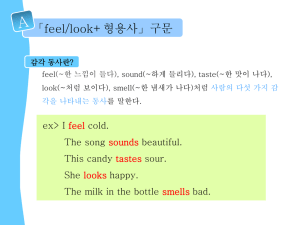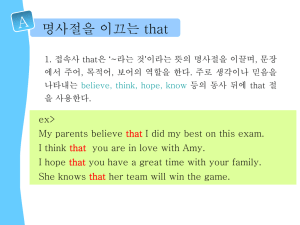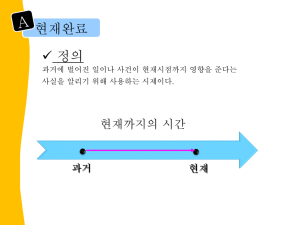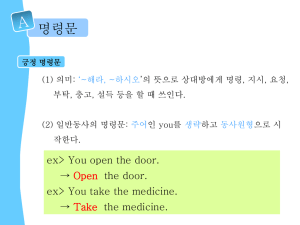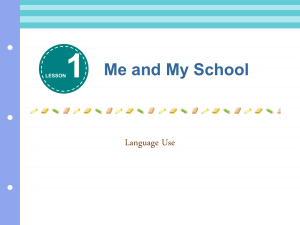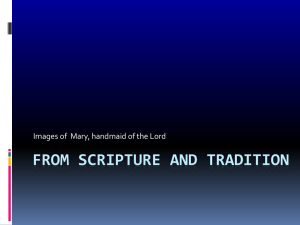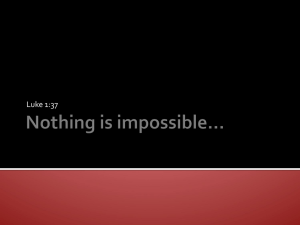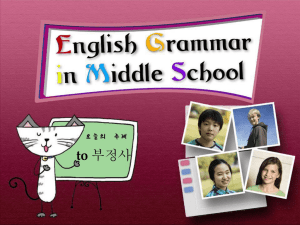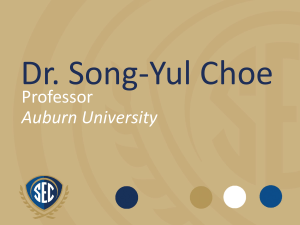명사 - YBM T.edu
advertisement
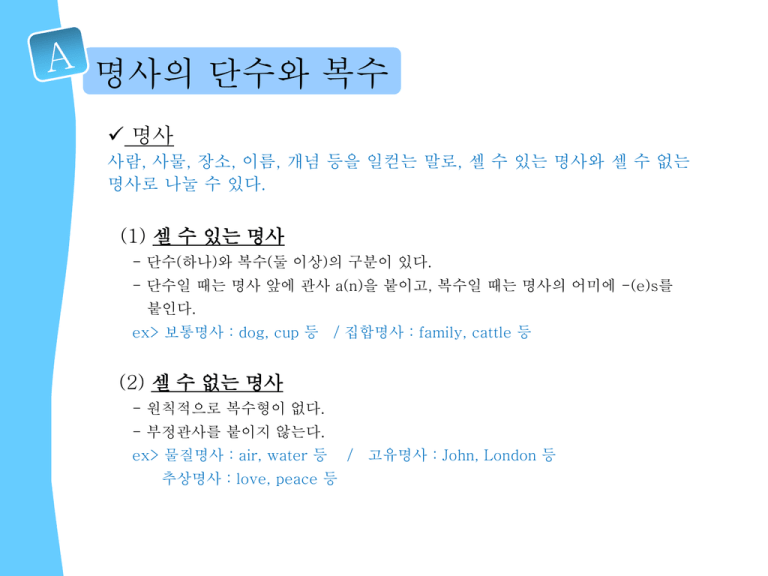
명사의 단수와 복수 명사 사람, 사물, 장소, 이름, 개념 등을 일컫는 말로, 셀 수 있는 명사와 셀 수 없는 명사로 나눌 수 있다. (1) 셀 수 있는 명사 - 단수(하나)와 복수(둘 이상)의 구분이 있다. - 단수일 때는 명사 앞에 관사 a(n)을 붙이고, 복수일 때는 명사의 어미에 -(e)s를 붙인다. ex> 보통명사 : dog, cup 등 / 집합명사 : family, cattle 등 (2) 셀 수 없는 명사 - 원칙적으로 복수형이 없다. - 부정관사를 붙이지 않는다. ex> 물질명사 : air, water 등 추상명사 : love, peace 등 / 고유명사 : John, London 등 셀 수 있는 명사의 복수형 (1) 규칙적인 변화 구분 명사의 변화 끝에 -s를 붙인다. 대부분의 명사 boys, pens, houses, apples, etc. 명사 끝에 –es를 붙인다. (발음을 편하게 하기 위해서) -s, -ss, -x, -sh, ch로 끝나는 명사 bus→buses, box→boxes, dish→dishes, watch→watches, class→classes 자음+o 로 potato→potatoes 끝나는 명사 ☆예외: piano→pianos, photo→photos baby→babies, lady→ladies 자음+y 로 끝나는 명사 ☆주의: 모음+y 로 끝나는 동사는 그냥 원형에 –s를 붙인다. boys, keys -f, -fe로 -f, -fe의 f를 v로 고치고 –es 붙인다. 끝나는 명사 knife→knives, leaf→leaves 셀 수 있는 명사의 복수형 (2)불규칙적인 변화 1) 전혀 다른 모습의 복수형 ex> man→men, woman→women, child→children, mouse→mice, tooth→teeth, foot→feet, goose→geese 등 2) 단수와 복수의 형태가 같은 경우 ex> fish(물고기), sheep(양), deer(사슴), Japanese(일본인) 등 3) 복수형으로 많이 쓰는 경우: 주로 짝이 되어 다니는 경우 ex> shoes, pants, glasses, scissors 4) 물질명사의 수량 표시: 개수를 하나씩 셀 수 없으므로 단위나 용기를 사용 하여 수량을 표시한다. ex> a glass of water / milk / juice → two glasses of water / milk / juice ex> a cup of coffee → three cups of coffee ex> a piece of paper → ten pieces of paper Check-up 다음 문장에서 어법상 잘못된 부분을 찾아 밑줄 치고 바르게 고쳐 써 봅시다. 1. Sheeps give us wool. → 2. Those boxs are very heavy. → 3. Los Angeles is a busy cities. → 4. I want three bottle of waters. → Check-up 정답 다음 문장에서 어법상 잘못된 부분을 찾아 밑줄 치고 바르게 고쳐 써 봅시다. Sheep 1. Sheeps give us wool. → Sheep give us wool. boxes 2. Those boxs are very heavy. → Those boxes are very heavy. city 3. Los Angeles is a busy cities. → Los Angeles is a busy city. bottles of water 4. I want three bottle of waters. → I want three bottles of water. 수여동사(4형식) 4형식과 수여동사의 의미 「주어+동사+간접목적어(~에게)+직접목적어(~을)」처럼 2개의 목적어를 가지는 문장을 4형식이라 하며, ‘~에게 ~을 (해)주다’의 뜻으로 쓰인다. 주로 give, send, teach, show, buy, make 등의 동 사를 수여동사라 한다. ex> Give me your hand. ex> Will you send Mary this letter? 4형식 문장을 3형식으로 바꾸기 (1)「주어+수여동사+간접목적어+직접목적어」의 4형식 문장 은 3형식「주어+수여동사+직접목적어+전치사(to, for, of)+ 간접목적어」의 어순으로 바꿀 수 있다. (2) 4형식을 3형식으로 바꿀 때 동사에 따라 다른 전치사가 사용 된다는 점에 주의해야 한다. 1) 전치사 to를 쓰는 동사 : give, send, teach, tell, show, bring, lend, send, write 등 ex> Can you lend me your money? → Can you lend your money to me? ex> I will bring them the menu. → I will bring the menu to them. 4형식 문장을 3형식으로 바꾸기 2) 전치사 for를 쓰는 동사: buy, make, get, cook, order 등 ex> My father will make my mom some sandwiches. → My father will make some sandwiches for my mom. ex> I will buy you a cup of coffee. → I will buy a cup of coffee for you. 3) 전치사 of를 쓰는 동사: ask 등 ex> Can I ask you a question? → Can I ask a question of you? Check-up 다음 문장에서 어법상 잘못된 부분을 찾아 바르게 고쳐 써 봅시다. 1. Jack should give Mary to this ring today. → 2. Will mom cook seafood spaghetti of us? → 3. You must ask this question your teacher. → 4. Mr. Choe can teach us to English. → Check-up 정답 다음 문장에서 어법상 잘못된 부분을 찾아 바르게 고쳐 써 봅시다. Mary this ring / this ring to Mary 1. Jack should give Mary to this ring today. → Jack should give Mary this ring today. → Jack should give this ring to Mary today. for 2. Will mom cook seafood spaghetti of us? → Will mom cook seafood spaghetti for us? Check-up 다음 문장에서 어법상 잘못된 부분을 찾아 바르게 고쳐 써 봅시다. this question of your teacher / your teacher this question 3. You must ask this question your teacher. → You must ask this question of your teacher. → You must ask your teacher this question. us English / English to us 4. Mr. Choe can teach us to English. → Mr. Choe can teach us English. → Mr. Choe can teach English to us.
